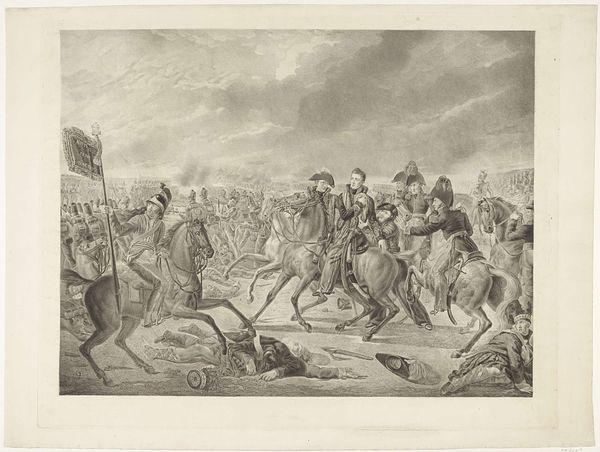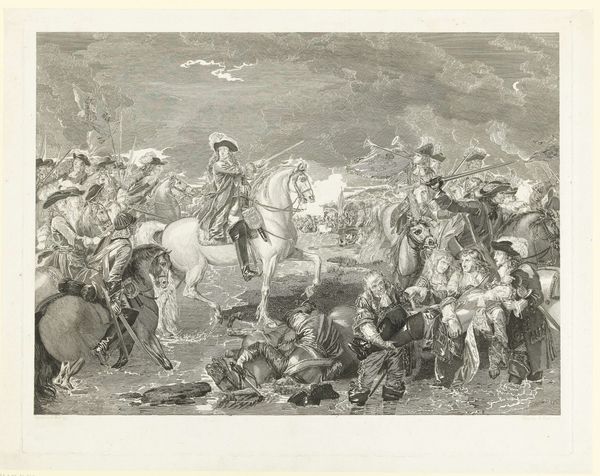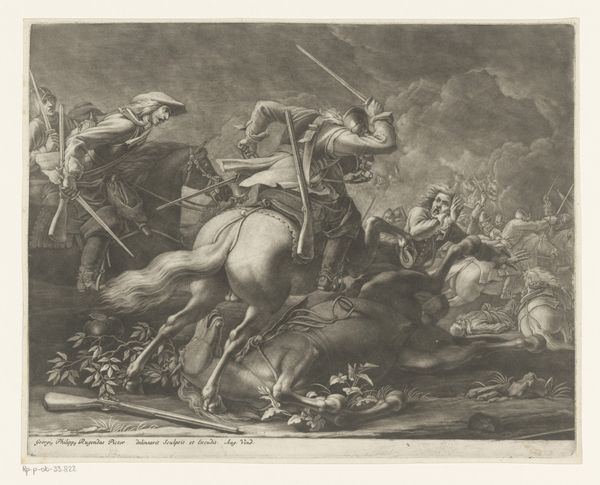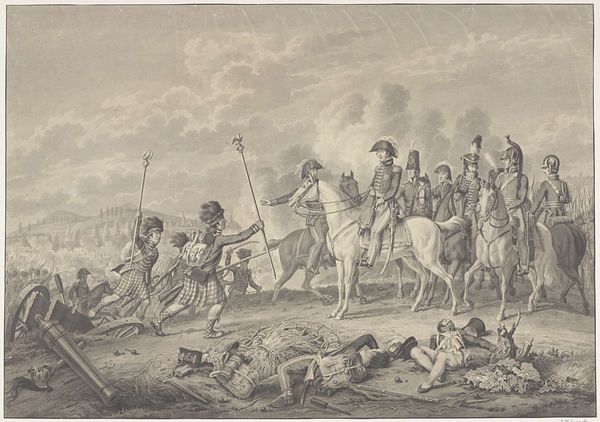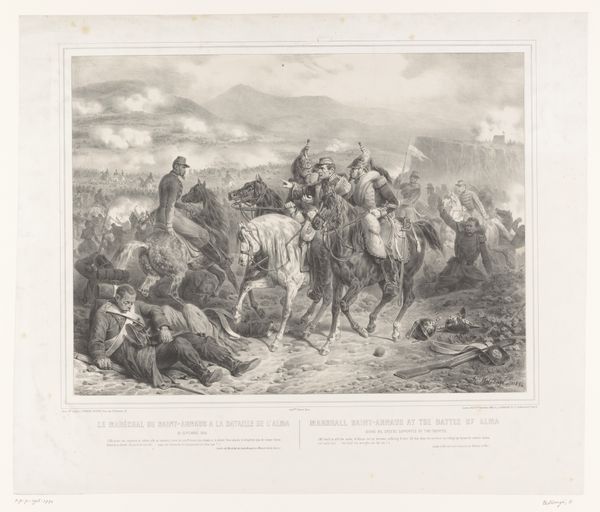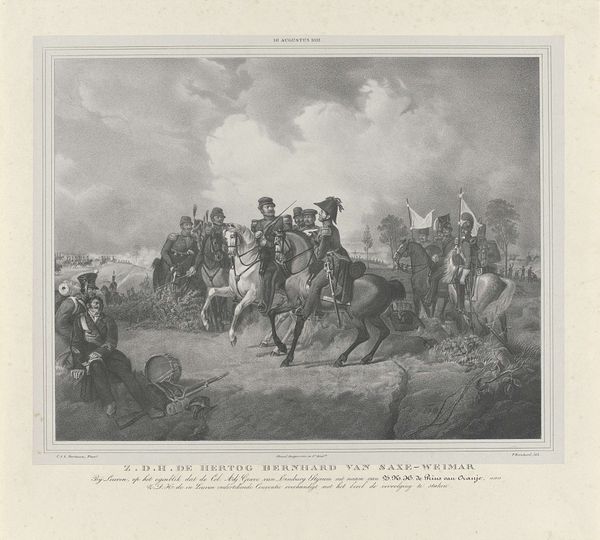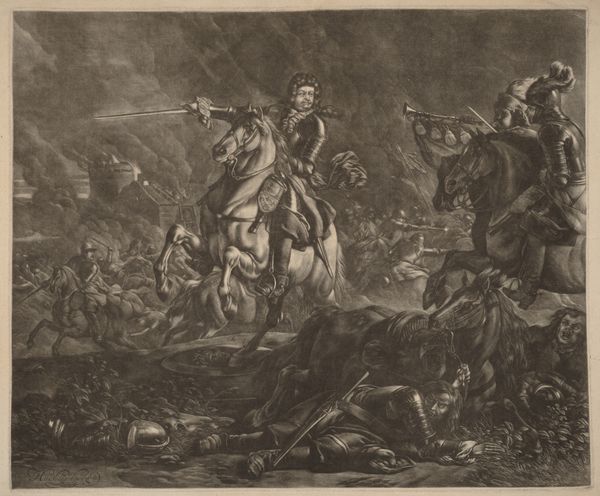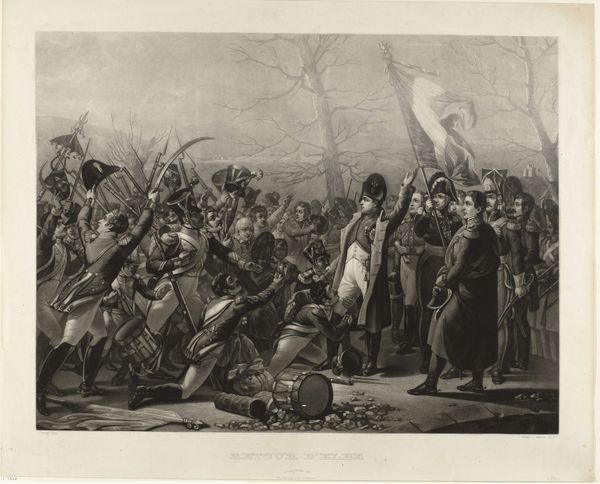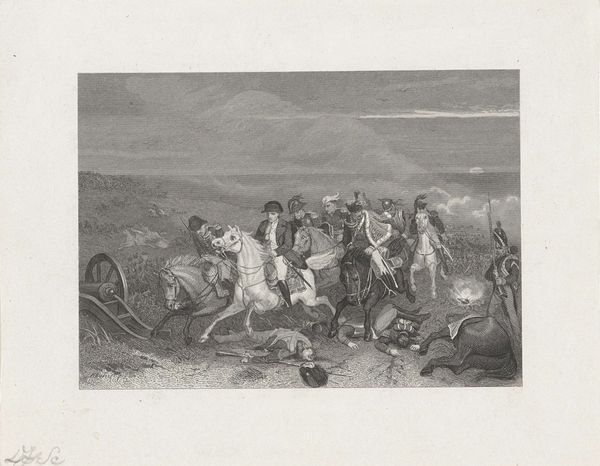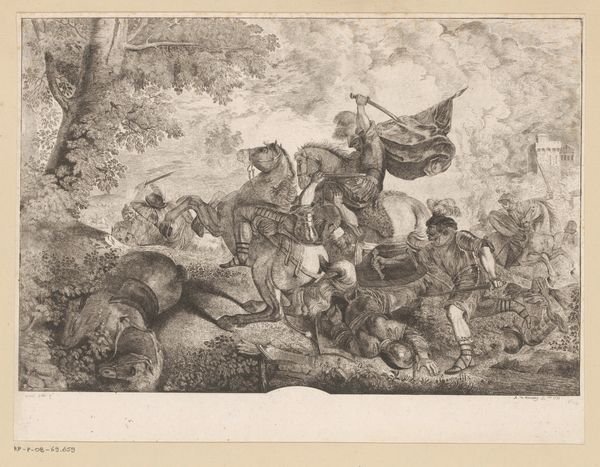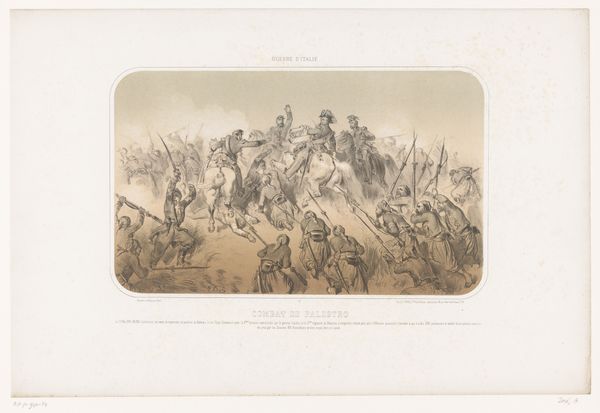
print, engraving
#
narrative-art
# print
#
old engraving style
#
landscape
#
figuration
#
history-painting
#
engraving
Dimensions: height 162 mm, width 240 mm
Copyright: Rijks Museum: Open Domain
Curator: The visual weight in this print immediately strikes me. The flurry of men and horses creates a palpable sense of chaos. Editor: Indeed. The work you’re observing, dating from 1853-1861, is entitled *Condé Wounded After Crossing the Rhine, 1672,* and is by Christiaan Bos. It portrays a key moment during the Franco-Dutch War, executed in the meticulous medium of engraving. The original scene obviously holds immense historical importance for the Netherlands. Curator: The title helps explain some of that frenzy I sensed! An engraving style lends itself to documenting military engagement—that classic graphic sensibility gives it a kind of official "record" feel, even when translated into art. Would you agree that graphic, reportage sensibility adds historical weight to it, given that the print was created well after the historical event? Editor: Precisely. What intrigues me is how Bos’s engraving actively constructs and perpetuates a heroic narrative. Look at the figure of Condé, wounded but defiantly holding his ground— a symbol of French resilience despite injury and the challenges of the Rhine crossing, itself an audacious military act. Curator: A charged symbol, even! His idealized appearance – composed face, unharmed figure – stands apart from the more ambiguously portrayed, massed figures that constitute the military. They become part of the scene. This creates tension; is it simply about memorializing his heroism or questioning his aloofness from his subjects, if the casualties beneath hint to some deeper cost of military ambition? Editor: Good question, since art, particularly public art, plays a crucial role in constructing national identity and historical memory. Engravings like this would have circulated widely, shaping public perception of this historical episode. Did it really foster unity and a common understanding or fuel nationalist sentiment? I believe that the art object helps the culture remember its battles—literally and ideologically. Curator: Looking closer, the landscape – particularly that storm-swept sky— amplifies the human drama below. It feels deliberate. Even nature bends to this symbolic purpose. And that in itself is an argument about how collective visual languages function! Editor: Indeed. It shows the layers of intent, design and reception always swirling under the image. This piece reveals not only history but the complex dynamics of image-making itself. Curator: A potent reminder that images always have their own layered histories and motivations woven into them, ready to be revealed through a keen eye.
Comments
No comments
Be the first to comment and join the conversation on the ultimate creative platform.

